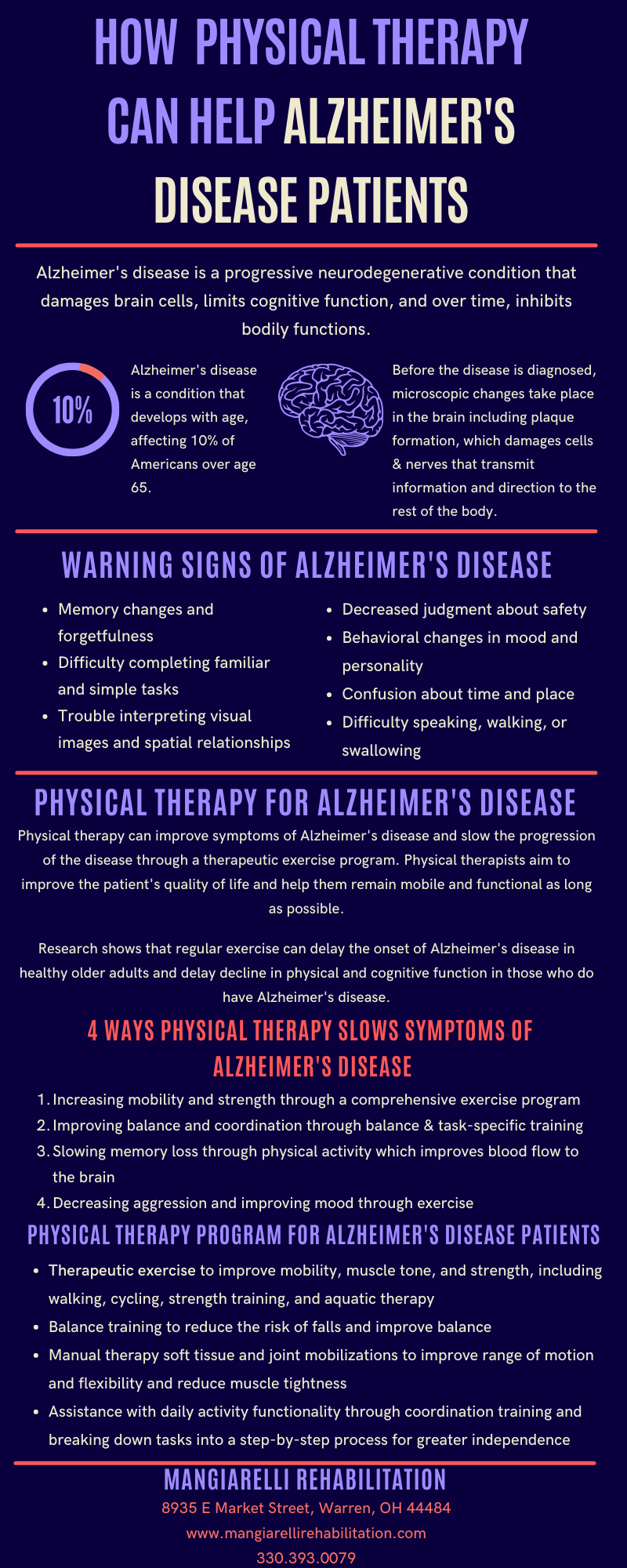How Physical Therapy Can Help Alzheimer’s Disease Patients
In light of National Alzheimer’s Disease Awareness Month this November, we are exploring how physical therapy can help Alzheimer’s disease patients. Alzheimer’s disease is a progressive neurodegenerative condition that damages brain cells, limits cognitive function, and over time, inhibits bodily functions. Alzheimer’s disease is a condition that develops with age, affecting 10% of Americans over age 65 [5.7 million Americans]. Alzheimer’s disease is the most common cause of dementia for an estimated 60-80% of cases.
Common signs of Alzheimer’s disease include memory changes and forgetfulness, difficulty completing familiar and simple tasks, trouble interpreting visual images and spatial relationships, decreased judgment about safety, behavioral changes in mood and personality, confusion about time and place, and difficulty speaking, walking, or swallowing.
Physical therapy can improve symptoms of Alzheimer’s disease and slow the progression of the disease through a therapeutic exercise program. A physical therapist can help improve the patient’s quality of life, help them remain mobile and functional as long as possible, and delay decline in physical cognitive function.
Physical activity is a known modifiable risk factor for dementia with studies showing that those who are physically active are less likely to experience a decline in their mental function and have a lowered risk of developing Alzheimer’s disease. Aerobic exercise in particular appears to be extremely beneficial for improving Alzheimer’s disease cognitive functioning. On the molecular and cellular level, exercise helps to reduce inflammation, regulate insulin pathways, and suppress oxidative stress which can all influence the brain and cognitive function. Exercise also promotes various plasticity-related events such as neurogenesis, which is the process by which new neurons are formed in the brain.
Research has shown that older adults that participate in regular physical activity showed less cognitive decline over a 2-to-10-year follow-up. Exercising improved their executive function, enhanced motor response, increased attention, and improved processing speed and memory. For an Alzheimer’s disease patient, a physical therapist designs a targeted exercise program tailored to their specific condition and ability.
A physical therapy program for Alzheimer’s disease can include:
Therapeutic exercise to improve mobility, muscle tone, and strength, including walking, cycling, strength training, and aquatic therapy
Balance training to reduce the risk of falls and improve balance
Manual therapy soft tissue and joint mobilizations to improve range of motion and flexibility and reduce muscle tightness
Assistance with daily activity functionality through coordination training and breaking down tasks into a step-by-step process for greater independence
Alzheimer’s disease is a difficult, progressive disease for both the patient and their families. As physical therapists, we are here to support you and your loved one as you navigate this condition, help slow symptoms of the disease, and improve your loved one’s overall fitness and quality of life. Give us a call to start your journey towards improved quality of life today!
